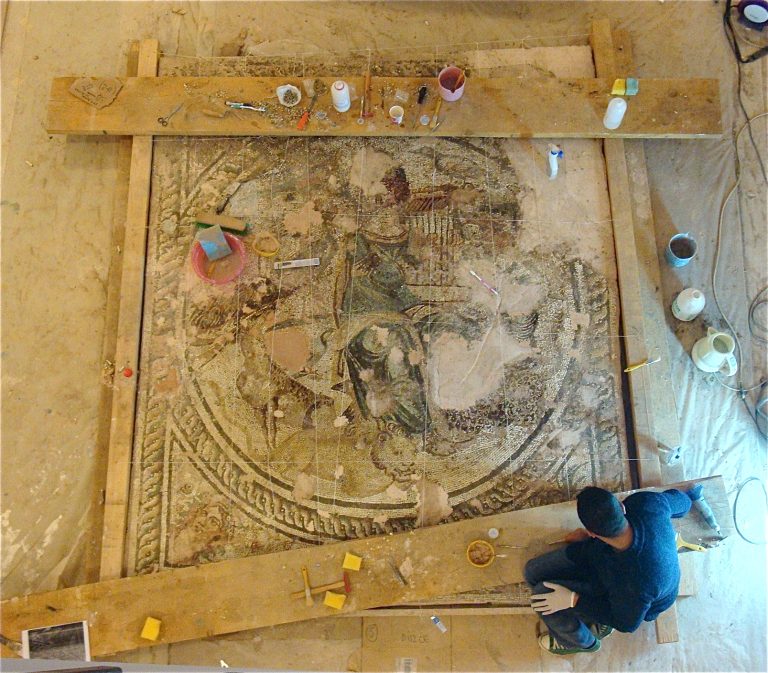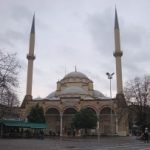Rural suburb of Düzce Population: 6,000
Old name: Hypia, Prusias ad Hypum (Roman)
Market day: Friday
Today Konuralp is little more than a suburb of Düzce as the road heads north out towards Akçakoca on the Black Sea. Still, it does manage to hang on to some semblance of a separate rural identity and there are reminders, too, of a more glorious past when it was the Prusias ad Hypium of the Romans.
Backstory
An ancient settlement on the site seems to have been called Hypia after the Hypios (now Melen) river that flowed nearby. This was absorbed into Bithynia by Prusias I (237-192 BC) who renamed it after himself.
In 74 BC Bithynia was willed to the Romans by its last king, Nikomedes IV (r. 94-74 BC) and was renamed Prusias ad Hypium.
The population gradually expanded and the city became important enough to be visited by the emperors Hadrian and Caracalla. Although the physical structures surviving until today are quite slight, the wonderful Orpheus mosaic on display in the museum and the 2.6m-high statue of Tyche holding aloft a child and a cornucopia that can be seen in İstanbul Archaeological Museum suggest that the town was a wealthy one.
In 1323 Konuralp Bey, one of the generals of Sultan Osman I, seized Prusias from the Byzantines and renamed it in his own honour. 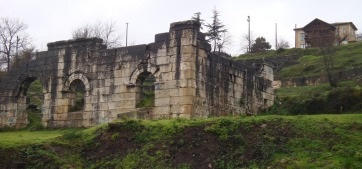
Around town
It’s best to take the bus from Düzce to the top of the hill in Konuralp where you will see a small main square with a Greek-inscribed memorial stone as the centrepiece. If you walk uphill behind it you will quickly come to the slight remains of the ancient theatre, dating back to the first century AD and still partially buried in the ground but with the access tunnels and part of the back wall surviving.
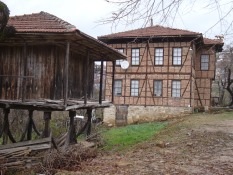 Around the theatre you will see examples of the various styles of domestic architecture that once graced Konuralp. Some are fairly traditional Ottoman houses with painted plaster laid over a wooden framework. Others also have wooden frames but infilled with red brick. Finally, a couple of houses have chalet-style balconies decorating their facades.
Around the theatre you will see examples of the various styles of domestic architecture that once graced Konuralp. Some are fairly traditional Ottoman houses with painted plaster laid over a wooden framework. Others also have wooden frames but infilled with red brick. Finally, a couple of houses have chalet-style balconies decorating their facades.
If you walk right up above the theatre and follow the road round you will come to the slight remains of an aqueduct (there are said to be more remains in Kemerkasım village but when I visited it was too cold to walk there). If, instead, you head down from the theatre you should try and find the fairly primitive old stone gate that stands behind one of the brick-built houses. As you pass under the arch look up and you will see a small carving of a horse on the lintel.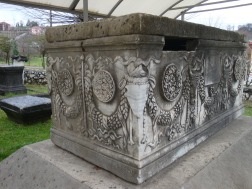
Heading back downhill you will come to the outsize museum building (closed Mondays) on the right. As so often, the most interesting items are actually outside, including a memorial stone with a tragedy mask on it that seems to commemorate a 29-year-old travelling actor from Athens; and a large sarcophagus decorated with elaborate swags and ox skulls that dates back to the first century AD.
Inside, the museum has so-so archaeology and ethnography sections although when I visited conservators were at work on a huge mosaic showing a green-robed Orpheus with his harp and with birds and animals around him that was the centrepiece of a vast pavement found some 20 years ago during roadworks. It’s now the pride and joy of the museum.
Sleeping
There is nowhere to stay in Konuralp. The classiest nearby hotels are in Düzce although in summer you might prefer to stay in one of Akçakoca’s small pensions and visit from there.
Transport info
There are buses from Düzce to Konuralp from a crossroads in the town centre every 15 minutes. If you want to continue on to Akçakoca walk back down to the main road and flag down a passing bus.
